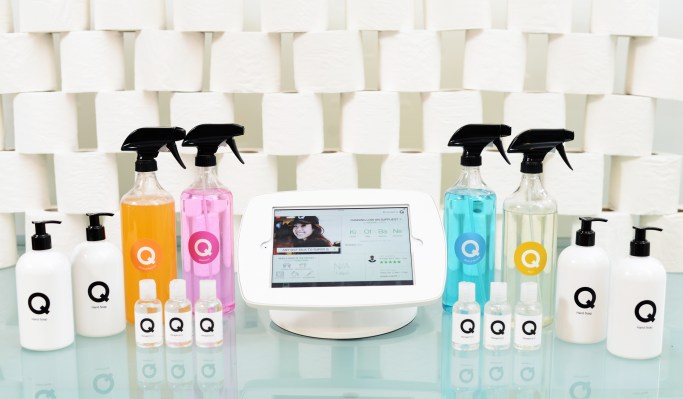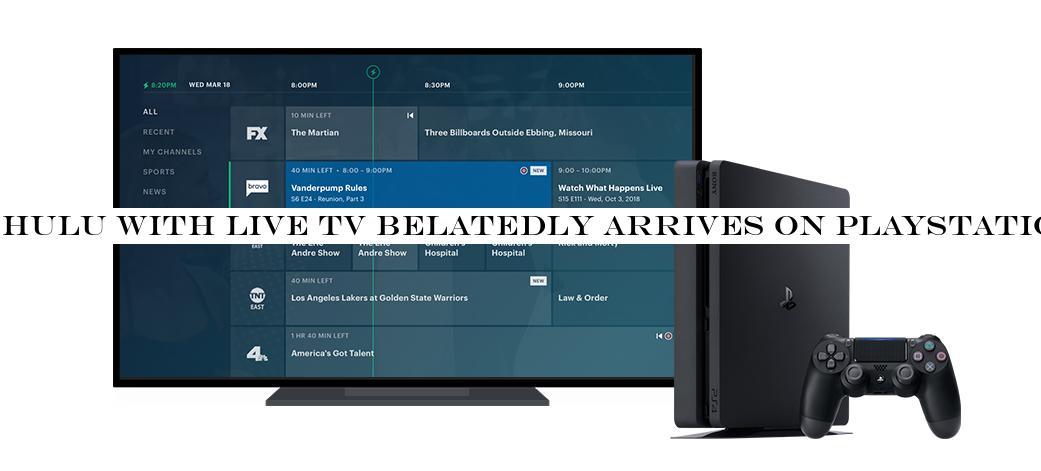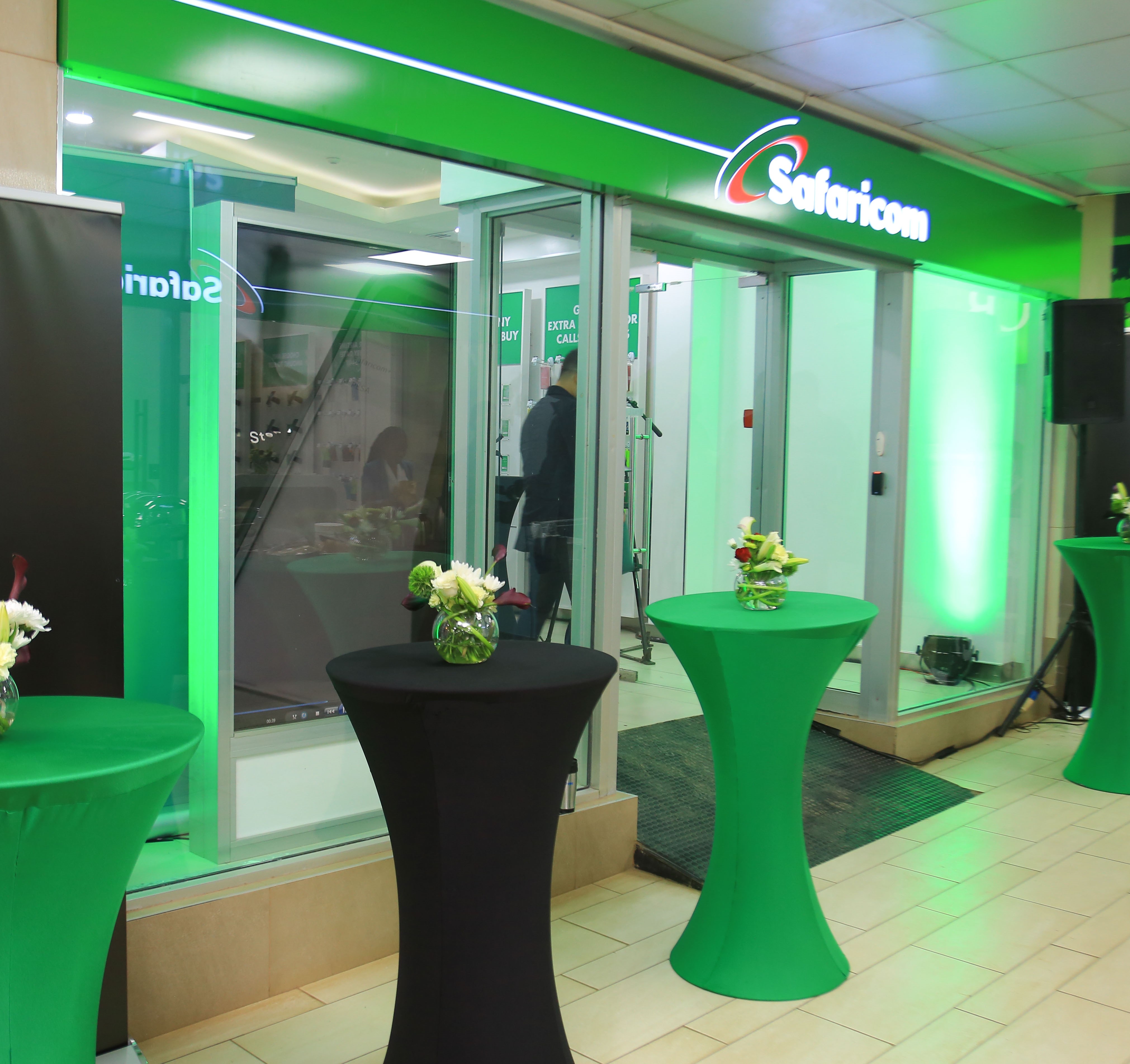Music
Trailers
DailyVideos
India
Pakistan
Afghanistan
Bangladesh
Srilanka
Nepal
Thailand
Iraq
Iran
Russia
Brazil
StockMarket
Business
CryptoCurrency
Technology
Startup
Trending Videos
Coupons
Football
Search
Download App in Playstore
Download App
Best Collections
Technology
BMW unveiled Tuesday a concept version of its upcoming i4, an all-electric four-door Gran Coupe with an estimated EPA range of 270 miles and the ability to produce 530 horsepower, pushing it past its high-performance M3 combustion vehicle.
The i4 concept vehicle, which was unveiled online because the Geneva International Motor Show was cancelled due to the coronavirus, is slated to enter production in 2021. BMW has been talking about and teasing what would follow its i3 electric vehicle for awhile now. BMW released some specs on the upcoming i4 at the LA Auto Show back in November.This latest unveiling shows off more of what we can expect the i4 to look like, plus a bit more information on the interior and expected range.
The concept has a long wheelbase, fastback roofline and short overhangs, suggesting that the production version will have a similar profile — a far cry from the wedge-shaped i3.
The front end shows a closed-off grille. BMW says it has given the grille of the concept a purpose beyond just a reminder of its combustion engine past. The grille will be used to house various sensors, according to BMW.
Perhaps the most noticeable features, besides the mammoth kidney-shaped grille, is the glass roof and a curved digital display in the interior.

While it is not clear if the production version will integrate these same features, we can expect that the interior will be more touch-based and have fewer buttons and knobs. It will be interesting to see if BMW sticks to the single-screen design. In the photo below, you&ll notice at least one knob located in the console area.
 Close followers of BMWEV plans might remember that the i4 was going to have a range of 600 kilometers, or about 400 miles. But it wasn&t clear if that figure, which would push it ahead of the competition, was based on the EPA or European WLTP. EPA estimates tend to be more conservative. BMW is now clarifying the range and has said the EPA estimate will be 270 miles.
Close followers of BMWEV plans might remember that the i4 was going to have a range of 600 kilometers, or about 400 miles. But it wasn&t clear if that figure, which would push it ahead of the competition, was based on the EPA or European WLTP. EPA estimates tend to be more conservative. BMW is now clarifying the range and has said the EPA estimate will be 270 miles.
The i4 will have the fifth-generation BMW eDrive, a platform that features a brand new electric motor, power electronics, charging unit and high-voltage battery. This fifth-gen platform will also show up in the iNEXT SUV and the iX3, which is headed for the Chinese market. The 80-kilowatt battery pack in the i4 is flat, according to BMW, and weighs 550 kilograms. For comparison, the battery pack in the Tesla Model 3 weighs 480 kg.
The unveiling of the i4 concept builds upon earlier announcements from BMW to push deeper into electrification. In November,BMW announced it would spend more than €10 billion euros ($11.07 billion) on battery cells from Chinese battery cell manufacturer Contemporary Amperex Technology Co. and Samsung SDI. BMWoriginal deal with CATL, which was announced in mid-2018, was for €4 billion worth of battery cells. This new contract is from 2020 to 2031, the German automaker said at the time.
BMW Group will be the first customer of CATLbattery cell factory that is under construction in Erfurt, Germany. BMW played anactive part in establishing CATL in Germany, according to Andreas Wendt, member of the Board of Management of BMW AG responsible for purchasing and supplier network.
- Details
- Category: Technology Today
Read more: The BMW Concept i4 gets us closer to what’s coming in 2021
Write comment (100 Comments)
Managed by Q co-founder Dan Teran had a plan. After selling his office management company to WeWork last year for a tidy $220 million — $100 million in cash and the rest in stock — he wanted to buy it back when WeWork decided to sell it off along with several other properties following its management shake-up last fall.
According to Bloomberg originally — and confirmed by our sources — Teran, who was employed by WeWork for five months after the sale as its head of corporate development and ventures — looked to put together a package to acquire the company beginning in December. To do so would require a substantial sum, however — enough to both buy the company, plus working capital to maintain its current staff and support its customers.
In the end, SoftBank-controlled WeWork apparently better liked the proposal of an outside bidder, and thatEden, a five-year-old company that competes directly with Managed by Q.
At least, Eden is confirming today that it has successfully bid $25 million in cash for Managed by Q, whose technology and accounts and an untold number of employees will also be incorporated into its offerings.
The money comes from a new, $29 million round that JLL, the commercial real estate services giant, just led for Eden in a round that also includes participation from the Y Combinator Continuity Fund and individual investors.
The new round is separate from a $25 million round that Eden closed in November and that was led by Reshape, with participation from Fifth Wall Ventures, Mitsui Fudosan, RXR Realty, Thor Equities and Bessemer Venture Partners, along with numerous other firms.
Said Eden CEO Joe Du Bey in an emailed statement to us: &Eden is proud to partner with Managed By Q to further our mission of creating a better place to work, for everyone. Managed By Qamazing customers, service vendors, team, and product makes it a huge win-win for all stakeholders. JLL leading the round and becoming a strategic partner to Eden is also exciting and will further accelerate our growth as we work to better serve the SMB category together.&
Teran did not respond to a separate press request yesterday, but if hefrustrated by the outcome, he still has that sale last year to WeWork to celebrate.
In the meantime, Eden — which launched in 2015 as on-demand tech repair and support service but eventually found itself in the same office management business as Managed by Q (both connect offices with third-party providers) — has now consolidated its market share, and obviously for a dramatically better price than WeWork paid less than a year ago.
The company, which until today employed roughly 70 people, was already active in 25 markets as of late November, including Berlin and London, and it featured more than 2,000 service providers on its platform. Its acquisition of Managed by Q takes it that much further.
- Details
- Category: Technology Today
You&ve probably come across YIrange of affordable security cameras while browsing on Amazon or other shopping sites in the past. Recently, the companyKami brand launched its $90 battery-powered outdoor camera. After spending some time with it, itclear that while it doesn&t quite provide the same experience you&d get from a wired $400 Nest Cam IQ or similar product, ita solid security camera and the ease of use makes up for its shortcomings.
With the Kami Wire-Free Outdoor Camera (thatits full name), you get a bullet-style camera that you can easily put anywhere you want, thanks to its wireless design. The fact that itwireless worried me a bit, given that I wasn&t sure how long those four 2600 mAh batteries would last, but even after a few hours of essentially live-streaming a picture of my backyard, the battery is still at 75%. Given that you&re not likely to do that under normal circumstances — and that YI promises up to six months of battery life — this should do just fine.
The camera itself streams and records 1080p video at 20 frames per second with a 140-degree field of view. Its IP-65 rating means you don&t have to worry about it getting wet, though I haven&t tested it in a full downpour yet. Therealso a microphone and speaker, in case you want to have a friendly conversation with your local burglar (or the delivery driver, whomever comes first).

You can run the camera without adding any internal storage and simply send six-second clips directly from the camera to your phone. You also can add a micro-SD card for longer recording times or subscribe to YIcloud storage service, which starts at $15 for a three-month plan and seven days of recording history.
While itwireless, you still have to attach the camera somewhere. YI provides all the installation hardware to attach the camera virtually anywhere you can drill a screw.
As for the software side, getting started simply involves popping in the batteries, using the camera to scan a QR code from the Kami or YI app (they are essentially the same) to connect to your Wi-Fi network and you&re ready to go. The process shouldn&t take more than a minute.
Especially at this price, these are solid specs, and the image quality, both during day and at night, using the cameranight vision, is good.
The only area where I felt the camera fell short of my expectations was in its motion detection. It uses passive infrared motion detection, and while that ensures that your camera isn&t going to ping you about every car that drives by, I did get a few random alerts when it started raining, for example, or when a bird flew through my yard. On other days, there were no false positives at all. Unlike some other cameras, including YIown lineup of indoor cameras that I&ve used in the past, this one doesn&t allow you to set up a specific zone to monitor. Thatan odd omission, and the one area where the camera fell short of my expectations. Occasionally, it also takes a long time for the camera to start streaming the live video feed and you have to exit the camera view and go back to the main menu. Thatnot exactly a deal breaker, but it is a bit of an annoyance. A software update could probably fix both of these issues.
Unlike some other cameras, including YIown lineup of indoor cameras that I&ve used in the past, this one doesn&t allow you to set up a specific zone to monitor. Thatan odd omission, and the one area where the camera fell short of my expectations. Occasionally, it also takes a long time for the camera to start streaming the live video feed and you have to exit the camera view and go back to the main menu. Thatnot exactly a deal breaker, but it is a bit of an annoyance. A software update could probably fix both of these issues.
Overall, though, the new Kami outdoor camera provides solid performance at this price. It won&t wow you, but it&ll do what it promises to do, and at this price, thatall you can ask. Whether you trust the company and are comfortable with the privacy implications of having your house under 24/7 surveillance is something you have to decide for yourself, of course. So far, though, YI has had a pretty good track record and no major breaches.
- Details
- Category: Technology Today
Read more: Kami’s wireless outdoor camera keeps it simple
Write comment (92 Comments)
HuluLive TV service, which allows users to watch both live and on-demand programming, including Hulu Originals, has finally arrived on the PlayStation 4 — close to three years after the service first debuted. The launch closes a significant hole in Huluofferings, as its Live TV service was already available across nearly all other major platforms, including Apple TV (4th gen.), Amazon Fire TV devices, Echo Show, Roku devices, Xbox 360 and Xbox One, Nintendo Switch, iOS, Android, Windows 10, web, Chromecasts and select TVs from LG, Vizio and Samsung.
Hulu didn&t offer an explanation for what took so long, but itnot the only live TV streaming service to not be available on PS4. Dish-owned Sling TV doesn&t include support for PS4, nor does AT-T TV NOW. However, Hulutop rival YouTube TV will stream on Sonygame console.
Consoles don&t tend to be a top priority for streaming TV services, as there are many other platforms that are used more often for streaming. In the U.S., for example, Roku is ahead of rivals like Apple and Amazon, according to eMarketer, in terms of media player usage. And letnot forget that even Sonyown PlayStation Vue wasn&t able to successfully tap into the sizable PlayStation user base in order to make its live TV service work. PlayStation Vue shut down for good in January.
Hulu says PS4 owners who already stream through the existing Hulu app for the standard service will now be able to switch to the Hulu + Live TV service through their account settings on Hulu.com in order to access it from their console. Customers who already subscribe to Hulu + Live TV will now be able to watch the live channels the next time they launch their Hulu app on the PlayStation 4.
The Live TV service offers a range of live TV channels, including ESPN, FOX, NBC and ABC, among others.
Hulu is now majority-owned by Disney, following Disney&sacquisition of 21st Century Foxand itssubsequent deal with NBCU that gave it operational control. Since Disney took over, it has made several major changes, including a reorg that saw the departure of Hulu CEO Randy Freer followed by the promotion of Huluchief marketing officer Kelly Campbell to president. Yesterday, Hulu rolled out a new FX hub on the service, featuring more than 40 shows and originals. FX was another property that came in through the acquisition, in addition to Foxstake in Hulu.
Disney announced in December that Hulu with Live TV had grown to 3.2 million subscribers, while its total Hulu subscriber base was 30.4 million. Disney+ — which is available on PS4 — was close behind, with 26.5 million subscribers.
- Details
- Category: Technology Today
Read more: Hulu with Live TV belatedly arrives on PlayStation 4
Write comment (91 Comments)VC firm TLcom Capital closed its Tide Africa Fund at $71 million in February, and announced plans to invest in 12 startups over the next 18 months.
The group — with offices in London, Lagos and Nairobi — is looking for tech-enabled, revenue-driven ventures in Africa from seed-stage to Series B, according to TLcom Managing PartnerMaurizio Caio.
He told TechCrunch the fund was somewhat agnostic on startup sectors, but was leaning toward infrastructure logistics ventures versus consumer finance companies.
On geographic scope, TLcom Capital will focus primarily on startups in Africabig-three tech hubs — Nigeria,Kenya and South Africa — but is also eyeing rising markets, such as Ethiopia.
TLcomcurrent Africa portfolio includes Nigerian trucking logistics venture Kobo360, Kenya&sTwiga Foods (a B2B food supply-chain company) and tech-talent accelerator Andela.
Both of these companies have gone on to expand in Africa and receive subsequent investment by U.S. investment bank,Goldman Sachs.
For those startups that wish to pitch to TLcom Capital, Caio encouraged founders to contact one of the fundpartners and share a value proposition. &If itsomething we find vaguely interesting, we&ll make a decision,& he said.
One $50 million round wasn&t enough for South AfricaJumo, so the fintech firm raised another — $55 million — in February, backed by Goldman Sachs, which led the Cape Town based company$52 million round back in 2018.
&This fresh investment comes from new and existing…investors includingGoldman Sachs,Odey Asset Management and LeapFrog Investments,& Jumo said in a statement — though Goldman told TechCrunch its participation in this weekround isn&t confirmed.
After the latest haul, Jumo has raised $146 million in capital, according toCrunchbase.
Founded in 2015, the venture offers a full tech stack for partners to build savings, lending and insurance products for customers in emerging markets.

Jumo is active in six markets and plans to expand to two new countries in Africa (Nigeria and Ivory Coast) and two in Asia (Bangladesh and India).
The companyproducts have disbursed more than $1 billion in loans and served over 15 million people and small businesses, according to Jumo data.
Jumo joins a growing list of African digital-finance startups raising big money from outside investors and expanding abroad. A $200 million investment by Visa in 2019 catapulted Nigerian payments firmInterswitchto unicorn status, the same year the company launched its Verge card product on Discoverglobal network.
Amazon Web Serviceshas entered a partnership withSafaricom— Kenyalargest telco, ISP and mobile payment provider — in a collaboration that could spell competition between American cloud providers in Africa.
In a statement toTechCrunch,the East African company framed the arrangement as a &strategic agreement& wherebySafaricomwill sell AWS services (primarily cloud) to its East Africa customer network.
Safaricom — whose products include thefamedM-Pesamobile money product — will also become the first Advanced Consulting Partner for the AWS partner network in East Africa.
Partnering with Safaricom plugs AWS into the network of one of East Africamost prominent digital companies.
Safaricom, led primarily by its M-Pesa mobile money product, holds remarkable dominance in Kenya, Africasixth largest economy. M-Pesa has 20.5 million customers across a network of 176,000 agents and generates around one-fourth of Safaricom≈ $2.2 billion annual revenues (2018).
 M-Pesa has 80% of Kenyamobile money agent network, 82% of the countryactive mobile-money subscribers and transfers 80% of Kenya mobile-money transactions, per the latest sector statistics.
M-Pesa has 80% of Kenyamobile money agent network, 82% of the countryactive mobile-money subscribers and transfers 80% of Kenya mobile-money transactions, per the latest sector statistics.
A number of Safaricomclients (including those it provides payments and internet services to) are companies, SMEs and startups.
The Safaricom-AWS partnership points to an emerging competition between American cloud service providers to scale in Africa by leveraging networks of local partners.
The most obvious rival to the AWS-Safaricom strategic agreement is theMicrosoft-Liquid Telecom collaboration. Since 2017, Microsoft has partnered with the Southern African digital infrastructure company to grow MicrosoftAWS competitor product — Azure — and offer cloud services to the continentstartups and established businesses.
More Africa-related stories @TechCrunch
- These specialized Africa VC funds are welcoming co-investors
- After VCs spend millions Nigeria restricts ride-hail motorbike taxis
- Africa e-tailer Jumia reports first full-year results post NYSE IPO
- Sokowatch raises $14M to digitize Africainformal B2B supply-chain
- African crowdsolving startup Zindi scales 10,000 data scientists
African tech around the ‘net
- Ethiopian ed-tech company Gebeya raises $2m funding round
- Nigerian crypto platform Bitfxt lands $15m from UK investors, Payitup parent company
- Details
- Category: Technology Today
Read more: Africa Roundup: TLcom closes $71M fund, Jumo raises $55M, AWS partners with Safaricom
Write comment (99 Comments)

Honeywell has announced that it will release the world's most powerful quantum computer with a quantum volume of at least 64 within the next three months.
The company also revealed that it has made strategic investments in two quantum computing software providers and that it will be partnering with JPMorgan Chase to develop quantum computing
- Details
- Category: Technology Today
Read more: Honeywell reveals plans to launch a quantum computer
Write comment (100 Comments)Page 1341 of 1441

 10
10





